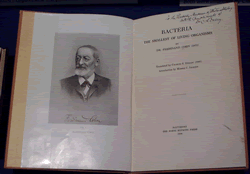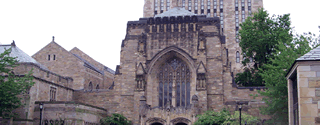| Sterling Memorial |
| Archives |
| Music |
| Divinity |
| Forestry |
| Kline Sciences |
| Medical Historical |
| Exhibit Map |
![]()
Ferdinand Cohn, Bacteria: The Smallest Living Beings, 1872 In his popular essay the bacteriologist, Ferdinand Cohn (1828-1898) described the arrangement of nature as a “cycle of life” in which, “the body in which life has been extinguished succumbs to dissolution, in order that its material may become again serviceable to new life. If the amount of material which can be moulded into living beings is limited on the earth, the same particles of material must ever be converted from dead into living bodies in an eternal circle; if the wandering of the soul be a myth, the wandering of matter is a scientific fact. . . . Since bacteria cause the dead body to come to the earth in rapid putrefaction, they alone cause the springing forth of new life.” (p. 25) |
||
 |
||
Whitney Humanities Center
Yale University
53 Wall Street
P.O. Box 208298
New Haven, CT 06520-8298
Office: (203).432.3112
lloydackert@sbcglobal.net
The
Sterling Memorial Exhibit is located in the Overflow Case
to the left of the circulation desk. The Sterling Memorial
Library is located at
120 High Street
Yale University
New Haven, CT 06520
Map, Directions
